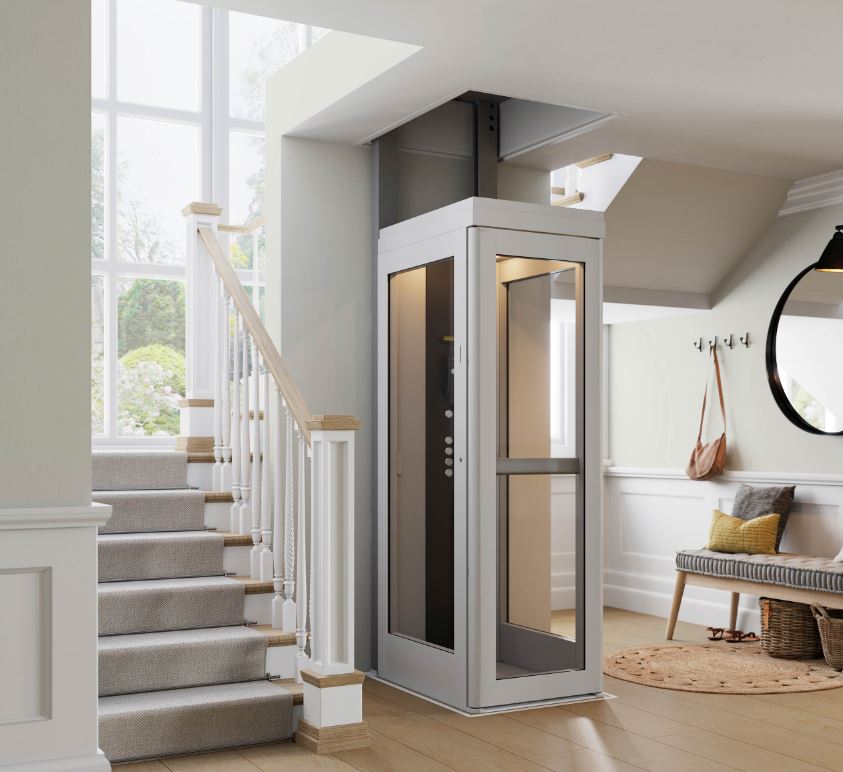Home Lifts: Empowering Australians to Age in Place

As Australia’s population continues its demographic shift towards an older average age, the concept of “ageing in place” has gained significant importance. For many older Australians, the ability to remain in their own homes is not just a matter of comfort and familiarity, but a crucial factor in maintaining their independence, social connections, and overall quality of life. In this context, home lifts have emerged as a vital solution, offering a safe, reliable, and increasingly affordable means for older Australians to navigate their homes and live independently for longer.
The Growing Imperative of Ageing in Place
Ageing in place refers to the ability of individuals to remain in their own homes and communities as they age, rather than being compelled to move to specialized facilities or rely on external care. This approach aligns with the preferences of most older Australians, who overwhelmingly express a desire to stay in their homes for as long as possible. Research consistently shows that the majority of Australians, regardless of age, prefer to live in their own homes for as long as they can.
The importance of ageing in place is underscored by Australia’s changing demographics. Projections indicate that the proportion of the population aged 65 and over is set to climb significantly. By 2050, it is estimated that almost one-quarter of Australia’s population will be aged 65 or older, placing greater pressure on the healthcare system, aged care services, and housing. Supporting older Australians to remain in their homes can alleviate some of this pressure, while also providing significant social and emotional benefits. Ageing in place fosters a sense of autonomy, security, and connectedness, enhancing overall well-being and quality of life.
The Challenges of Remaining at Home
However, ageing in place is not without its challenges. As individuals age, they may experience reduced mobility, balance problems, and other physical limitations that make it difficult to navigate their homes safely. For many, stairs become a significant obstacle, representing not only a source of anxiety but also a real risk of injury. Multi-level homes, in particular, present a challenge for older Australians with physical limitations. Without solutions to improve mobility, remaining at home can become an unrealistic option.
Common challenges associated with ageing in place include:
- Difficulty navigating stairs: Leading to a heightened risk of falls, one of the leading causes of injury for older Australians.
- Limited access to essential areas of the home: Including bedrooms, bathrooms, and kitchens, which are necessary for daily activities.
- Reduced independence: The need to rely on external assistance or family members for tasks that were previously manageable alone.
- Social isolation: Reduced mobility can lead to increased isolation, making it harder for seniors to engage in community life and maintain their social connections.
These challenges underscore the importance of creating homes that are safe, accessible, and supportive of ageing in place. In this context, home lifts have become a crucial element in enabling older Australians to continue living in their homes safely and independently.
Home Lifts: A Key to Independent Living
Home lifts offer a practical and effective solution to many of the challenges associated with ageing in place. By providing a safe, convenient, and reliable means of vertical transportation, lifts enable older Australians to navigate between levels of their homes with ease and without fear of injury. This can significantly reduce the risk of falls and enhance access to all areas of the home, thus supporting independence.
The benefits of a home lift extend beyond mere convenience. They can:
- Reduce the risk of falls and injuries: A major concern for older adults, home lifts eliminate the need to navigate stairs, which are one of the most common causes of accidents.
- Enable individuals to remain active and engaged: With easy access to different floors, individuals are more likely to maintain an active lifestyle and continue participating in social and community activities.
- Provide peace of mind: For both the seniors using the lift and their families, home lifts create a safer living environment and provide reassurance that the home is fully accessible.
Beyond the Practicalities: The Emotional and Social Dimensions
While the physical benefits of home lifts are undeniable, their impact on emotional and social well-being should not be overlooked. For many older Australians, the ability to remain in their own homes is deeply connected to their sense of identity, belonging, and connection to their communities.
Maintaining the autonomy to move freely within one’s home can significantly enhance a senior’s sense of control and dignity. It allows them to retain their independence and make their own decisions about how they live and engage with the world. For many, this can reduce feelings of helplessness or dependence, promoting a more positive outlook on life.
Moreover, being able to stay in one’s home means maintaining important social connections. Many seniors who are forced to leave their homes due to mobility issues face isolation and a disconnection from their friends, family, and broader community. Home lifts can help prevent this, keeping seniors involved and engaged in their social networks.
Economic Considerations and the Shifting Landscape
While the upfront cost of installing a home lift can seem daunting, it’s crucial to consider the long-term economic implications. The cost of installing a lift is a fraction of the expense associated with relocating to a single-level home, moving into residential aged care, or making major home renovations to accommodate mobility issues. In many cases, a home lift can represent a prudent investment for families looking to enhance their living environment without the need for disruptive changes.
Furthermore, the value a lift adds to a property makes it a wise financial decision that can benefit the homeowner when they later decide to sell the house. As more Australians choose to age in place, homes equipped with accessibility features, such as home lifts, are becoming more desirable, potentially increasing their market value. For those looking to stay in their home for the long term, home lifts offer a cost-effective solution that also enhances the property’s appeal.
Navigating Government Support and Funding Options
The Australian government has recognised the importance of supporting older Australians to age in place, and various programs are available to assist with home modifications. The National Disability Insurance Scheme (NDIS), for example, provides funding for eligible individuals with disabilities to make their homes more accessible. This includes home lifts, which are a key element in facilitating mobility and independence for those with mobility impairments.
Additionally, the Support at Home program, scheduled to replace existing home care packages, will offer more tailored assistance for older Australians, including financial support for home modifications such as lift installations. This policy shift represents a significant step forward in ensuring that ageing Australians can continue to live comfortably and safely in their homes.
Emerging Trends in Residential Design
The integration of home lifts is influencing broader trends in residential design. Architects and builders are increasingly incorporating lift-ready spaces into new homes, allowing homeowners to install a lift at a later stage without requiring major structural modifications. This forward-thinking approach ensures that homes remain adaptable as residents age and their mobility needs change.
The recognition of home lifts as a desirable feature is also prompting changes in the way homes are designed, with more emphasis on creating spaces that are both functional and aesthetically pleasing. Many manufacturers of home lifts now offer a range of stylish and compact options that can seamlessly integrate into the home’s design, making them an attractive addition to both new and existing properties.
Compact Home Lifts: Tailored for Australian Homes
Several companies offer innovative compact home lift solutions specifically designed for the Australian market. These compact lifts are designed to require minimal structural modifications and can be installed quickly and efficiently, making them an attractive option for homeowners looking to improve accessibility without major disruptions.
In addition to their compact size, these lifts are often energy-efficient, ensuring that homeowners can enjoy the benefits of vertical transportation without significantly increasing their utility costs. This makes them an ideal solution for families looking for an affordable, practical, and environmentally friendly way to improve mobility within the home.
The Future of Ageing in Place
As Australia’s population continues to age, the demand for accessible housing solutions will only grow. Home lifts are poised to play an increasingly important role in enabling older Australians to remain in their homes, maintain their independence, and continue to contribute to their communities.
By embracing innovative technologies, promoting supportive government policies, and fostering greater awareness of the benefits of ageing in place, Australia can create a society that values and supports its older citizens. This will not only enhance the lives of older Australians but also reduce the strain on the healthcare system and aged care services.
For those considering this option, consulting with a reputable home lift provider can offer valuable insights into how these innovative solutions can be tailored to meet the unique needs of your home. As the market for home lifts continues to evolve, Australians can look forward to a future where ageing in place is not only feasible but a realistic and desirable option for more individuals.
Home lifts are increasingly recognised as a vital solution for supporting older Australians in their desire to age in place. With the combination of physical, emotional, and economic benefits, home lifts are enabling seniors to maintain their independence, improve safety, and live with dignity. As Australia’s population continues to age, home lifts will play an integral role in shaping the future of accessible housing, ensuring that older Australians can live comfortably and safely in their homes for as long as possible.







